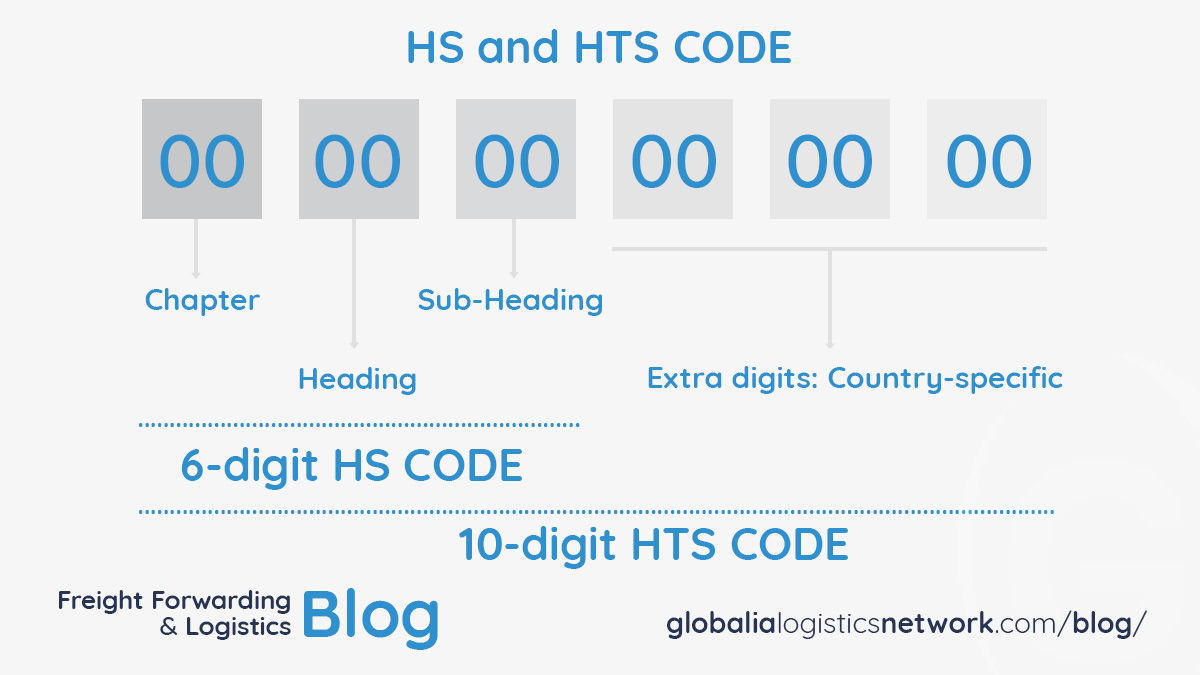Seasoned freight forwarders know that a single wrong digit in a tariff code can trigger cargo holds, unexpected duties, or even seizure. In today’s environment—where regulators lean on data analytics and shippers demand Netflix-speed transit visibility—customs classification codes are a first-line defence against costly disruption. Yet many teams still confuse three common terms: HS Code, HTS Code, and Schedule B. This guide untangles that knot, shows you where each code lives in the paperwork ecosystem, and—most importantly—explains the difference between HS code and HTS code so you can protect margins and customer relationships.
HS Code 101: The Global Skeleton Key
If you searched “what is HS code” and landed here, you’re not alone. The Harmonized System (HS), maintained by the World Customs Organization, is a six-digit universal language for goods. Think of it as the global skeleton key that lets customs computers in 200 + economies talk to one another.
-
Structure:
• Chapter (2 digits) – Broad commodity group (e.g., 84 = machinery)
• Heading (4 digits) – Narrower scope (e.g., 8407 = spark-ignition engines)
• Sub-heading (6 digits) – Precise description (e.g., 840734 = outboard marine engines)
After six digits, each country adds its own twist, which brings us to U.S. variants.
HTS Code Meaning: The Importer’s GPS
In the United States, the Harmonized Tariff Schedule (HTS) extends the HS architecture to ten digits for imports. When brokers file entries in ACE, they use HTS numbers—sometimes called “US import codes”—to calculate duty, enforce quotas, and flag forbidden items.
Key facts for freight forwarders
-
Legal authority: Issued by the U.S. International Trade Commission (USITC) and updated roughly twice a year.
-
Duty rates & trade remedies: The 8th and 10th digits drive anti-dumping duty, Section 301 tariffs, and preferential rates under FTAs.
-
Interaction with partner government agencies (PGAs): FDA, EPA, and others use HTS classifications to trigger additional filings or inspections.
Schedule B: The Exporter’s Report Card
Schedule B resembles HTS but targets exports. Managed by the U.S. Census Bureau, Schedule B codes feed Automated Export System (AES) filings, populating foreign-trade statistics and enforcing embargoes.
-
Why different? Not every import tariff line has an export counterpart; the Census Bureau trims low-volume codes for statistical efficiency.
-
Compliance stake: Filing an incorrect Schedule B can invite civil penalties or denial of export privileges.
Difference Between HS Code and HTS Code—And Where Schedule B Fits
To keep the three systems straight, remember their unique “job descriptions.”
-
The HS Code is the six-digit global framework maintained by the WCO and recognised by virtually every customs authority in the world.
-
The HTS Code is the United States’ import-focused expansion of that framework to eight or ten digits. It is legally binding for duty calculation and PGA screening.
-
Schedule B is a ten-digit export-focused list published by the Census Bureau. It mirrors HTS structure where possible but excludes many low-volume import lines and adds a few export-specific ones for statistical tracking.
From a freight forwarder’s viewpoint, the difference between HS code and HTS code boils down to jurisdiction and liability: HS for global communication, HTS for U.S. import filings, Schedule B for U.S. export declarations. Misapplying any of them undermines duty calculations, delays clearances, and can fracture client trust.
Four Real-World Scenarios That Expose the Difference Quickly
-
E-commerce rush: A Peruvian shipper provides only an HS code for phone chargers. U.S. Customs still needs the precise HTS code to apply Section 301 duties on electronics.
-
Project cargo: You classify a wind-turbine nacelle under HS 8502. During U.S. outbound filing, you must pivot to the matching Schedule B line or risk AES rejection.
-
FTA claims: A Mexican supplier relies on HS 8708 for auto parts. To gain USMCA preferential duty, the broker must validate that the HTS 10th digit aligns with originating-content rules.
-
Trade remedies: A Chinese steel importer shifts from HTS 7219330080 to an adjacent code ending 70 to evade anti-dumping rates—customs audits love catching that stunt.
Each case illustrates how knowing the difference between HS code and HTS code can be the hinge between frictionless trade and a compliance nightmare.
HS Code Lookup for Freight Forwarders: Tools That Save Hours
Here are four resources every operations team should bookmark:
-
USITC DataWeb – A free, authoritative source for duty rates and legislative notes. Perfect for quick checks but assumes you already have the HTS structure in mind.
-
WCO HS Nomenclature – The global reference for the first six digits; indispensable when dealing with multi-country routings but lacking national extensions.
-
CROSS (Customs Rulings Online Search System) – A treasure trove of binding rulings. Great for precedent but written in dense legal language.
-
AI-powered classifiers – Modern SaaS tools that batch-process thousands of SKUs in seconds. Fast and scalable, though edge cases still need human quality control.
Integrate at least one lookup tool into your TMS to accelerate HS classification for exports and imports alike.
Best Practices to Nail Codes the First Time
-
Create a “golden record” at SKU level. Store HS, HTS, and Schedule B alongside weight, origin, and ECCN.
-
Verify shipper declarations. Clients often misclassify; a quick rule-based check can prevent downstream chaos.
-
Refresh when duty rates change. Section 232 steel tariffs shifted dozens of HTS lines overnight—schedule quarterly reviews.
-
Document your decision tree. When auditors ask, “why this code?” point to CROSS rulings or WCO notes.
-
Train commercial teams. Sales quotes backed by the right code avoid margin-killing surprises later.
Quick Q&A for Cargo Agents in the Field
-
Can I use the same number for Schedule B and HTS?
Often yes, but not always. Roughly one in ten HTS lines has no direct Schedule B twin, especially niche items with low export volume. -
If my product kit changes, do I need a new code?
Possibly. Adding or removing components can shift the classification under the General Rules of Interpretation. Re-evaluate whenever a BOM changes. -
What if U.S. Customs disagrees with my HTS classification?
File a Post-Entry Amendment (PEA) for imports or a corrected EEI for exports. Attach your rationale and, if possible, cite a CROSS ruling for support.
Final Takeaways—And Why Forwarders Hold the Key
In an era of trade volatility and data-driven audits, mastering the difference between HS code and HTS code isn’t academic—it’s a competitive necessity. Shippers rely on freight forwarders to navigate labyrinthine regulations, minimise landed cost, and keep cargo moving. By aligning HS, HTS, and Schedule B from the first quote to the final clearance, you:
-
Slash border delays and demurrage
-
Prevent retroactive duties that devour profit margins
-
Strengthen credibility with customs and clients alike



